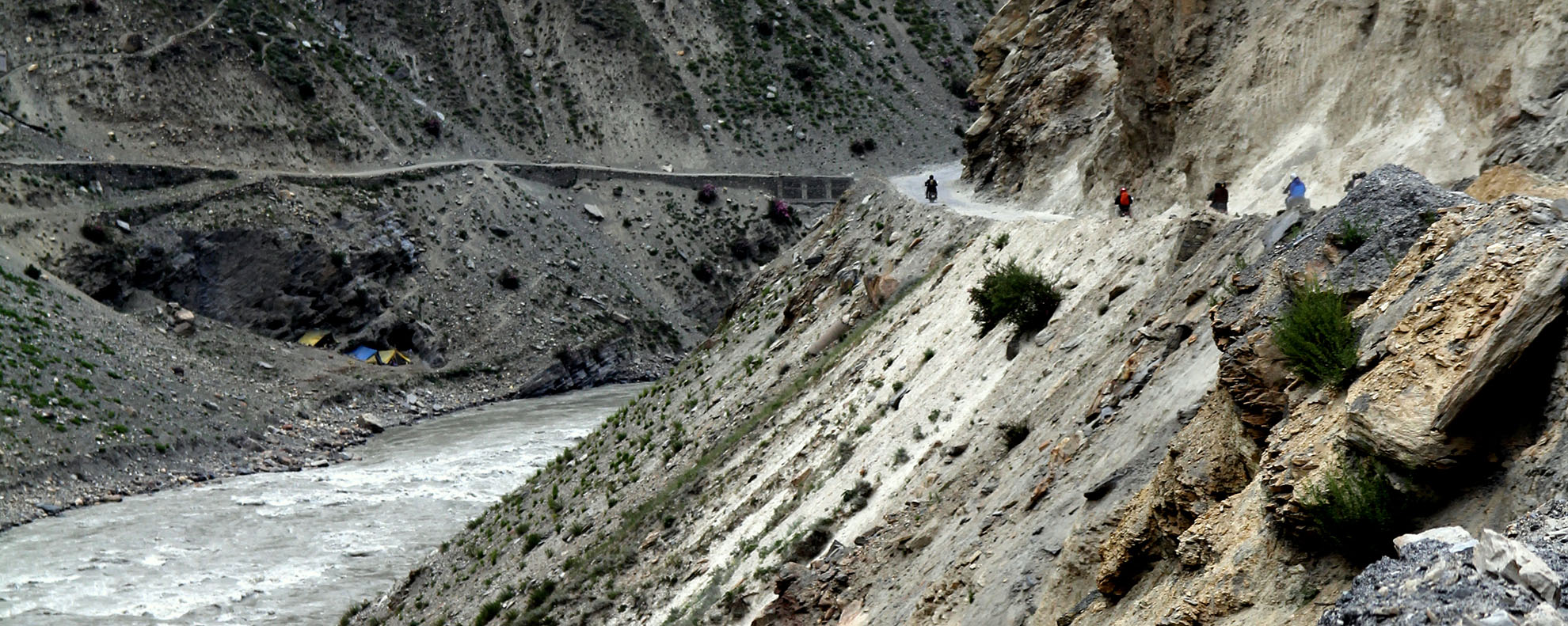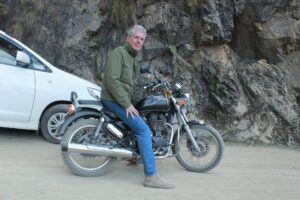How riding in the Himalayas taught me about pace in life
Fast is fine, but accuracy is final. You have to learn to be slow in a hurry.
– Wyatt Earp (gambler, deputy sheriff and deputy town marshal)
When I first started riding a motorcycle fifteen years ago, I wanted to be able to get to riding ‘fast’ as soon as possible. Without thinking it through I rushed into it, and in the process of getting to ‘fast’, I had a bunch of spills and accidents. About six years ago I got my first opportunity to ride in the Himalayas and here too I wanted to be able to cover as much ground as possible so that I could see it all. Once again this attitude lead to a number of instances that could have proven fatal had it not been for the presence of mind, skill and ultimately luck. My point is that thinking that I’m going fast is not necessarily the same as actually ‘going fast’ or progressing.
This paradoxical situation of trying to move fast but ending up slow got me reflecting on a line I heard before. It goes – Slow is smooth, smooth is fast. Its origins lie in training practices adopted by the US military Special Forces. And essentially it means that within the context of executing a task – rushing or doing things recklessly often proves futile to progress and also fatal to the task at hand. Instead, thinking, moving carefully and deliberately with a specific goal in mind puts you in a position to increase your speed and fluidity at a task – increasing your chances at success and reducing risk.

I would like to share with you two scenarios of how this applied to both my life and motorcycling. I’ll start with my experience in the Himalayas as a traveler and as a motorcycle tour guide for Karma Yatri. I spent close to three years living in the Himalayas, Himachal Pradesh, and Ladakh to be specific. I was guiding motorcycle tours and running operations for trips into the upper Himalayas. Out there, especially on the Manali – Leh highway and places in Ladakh (Nubra, Pangong, Tso Morriri, Tso Kar, Khardung La, and other mountain passes) the roads are often non-existent, hugging the sides of mountains with sheer drops, tracks of muddy patches filled with loose sand, narrow passages, water crossings, and downright dangerous situations.
In spite of these very apparent dangers, there was this niggling feeling of what it would be like to go fast on these roads (much like my teenage days and my first motorcycle experiences). And so, on my own personal time when I was not guiding a tour, I tried to ride faster than required, often overshooting corners, narrowly missing loose mud patches and being very irresponsible about my own safety. A few close calls definitely put an end to that stupidity. I soon realized though that if I want to ride fast, it would be possible, just not in the way and technique I was using at the time. So I started the habit of examining and judging a long stretch of road in smaller parts; planning my entry and exit strategy for each stretch or part, making sure I was at the right entry speed, in the proper gear (for the speed my bike was at) and making sure to always de-accelerate on my exit from a stretch of road. Putting these techniques into practice allowed me to effectively tackle each patch smoothly and thus become faster such that the sum of those patches would add up in one long smooth transition and a better average pace overall, on a longer distance.
This not only kept me safe and respectful of other people on these roads but also made me a lot less stupid and helped me relax and enjoy the full benefits of riding through the scenic vistas, fresh air, snow-capped mountains and everything that comes with the joy of exploring the Himalayas, whilst still being able to enjoy the thrill of speed on my motorcycle.
This helped make me a much smoother and safer rider, and maybe, more importantly, a much better traveler because I saw more and took in more detail. Having done this, I could share more about my experiences with other people. A by-product of this was that I could now apply these skills to any terrain I rode on and now I think also in life’s situations.
But, I’m human and like all humans on this planet, we are really bad at holding onto details and recalling lessons learned. This is just my opinion and I’m sure there are people out there who can disprove this (through example) but the majority of us suck at this. And so having completely forgotten about this lesson I learned from my experience in the Himalayas years ago; the other day I caught myself swerving through traffic (trying to keep pace) in order to complete a long ride that I was on. I had three hours to reach my destination and getting stuck in traffic on the outskirts of the city was not helping. There I was, riding furiously – upshifting, downshifting, braking and accelerating as fast and as much as I could, thinking that I was making good time. What I did not realize was, all this exertion in the name of going fast was not helping one bit and my average speed was still the same as compared to a previous trip where I was riding leisurely and taking my time to plan and slip my way through traffic and obstacles.

At the time of that ride, I was reeling from a series of personal mistakes wondering how to best correct them in the fastest way or time possible. (Let’s call a spade a spade and admit they were f****ups on my end). And so the two trains of thought came together and what I learned in the Himalayas did eventually come to my rescue. It dawned on me that just like my frustration with my pace on this ride, my current personal problems were the exact outcome of the same stupid notion of trying to rush things through, making stupid mistakes and having to take one step forward only to end up taking two steps back. So in my motorcycle, my personal and professional life I have learnt to relax, plan my strategy, be deliberate with my actions and pace, so that I save myself from the illusion of seeming to go fast but in reality course-correcting improper planning all the time. I honestly feel that we can learn a lot about life from motorcycling.
It’s very essence has a lot in common with existence and by that I mean you have an ability to regulate your speed in life (think acceleration), the ability to brake or stop when you need to, the capacity to shift gears to slow down or go faster, and just like on a motorcycle the all-important concept of balance (in life as well) which keeps everything flowing forward and in one smooth pace. The next time I’m stuck in traffic, life, or wanting to rush through a mountain road. I’m going to remember – Slow is smooth, smooth is fast. It may not necessarily apply exactly to every situation but now and then it helps make you ‘faster’ at things you want to achieve.

Shawn Pereira is an avid motorcyclist who believes the world is a fair place if your smart enough about it. A traveler by heart, one of his favorite destinations is Spiti in the Himalayas – for the sheer riding challenges one finds there! But, most of the time you will find him on his motorcycle ‘Shakti’ just riding …





